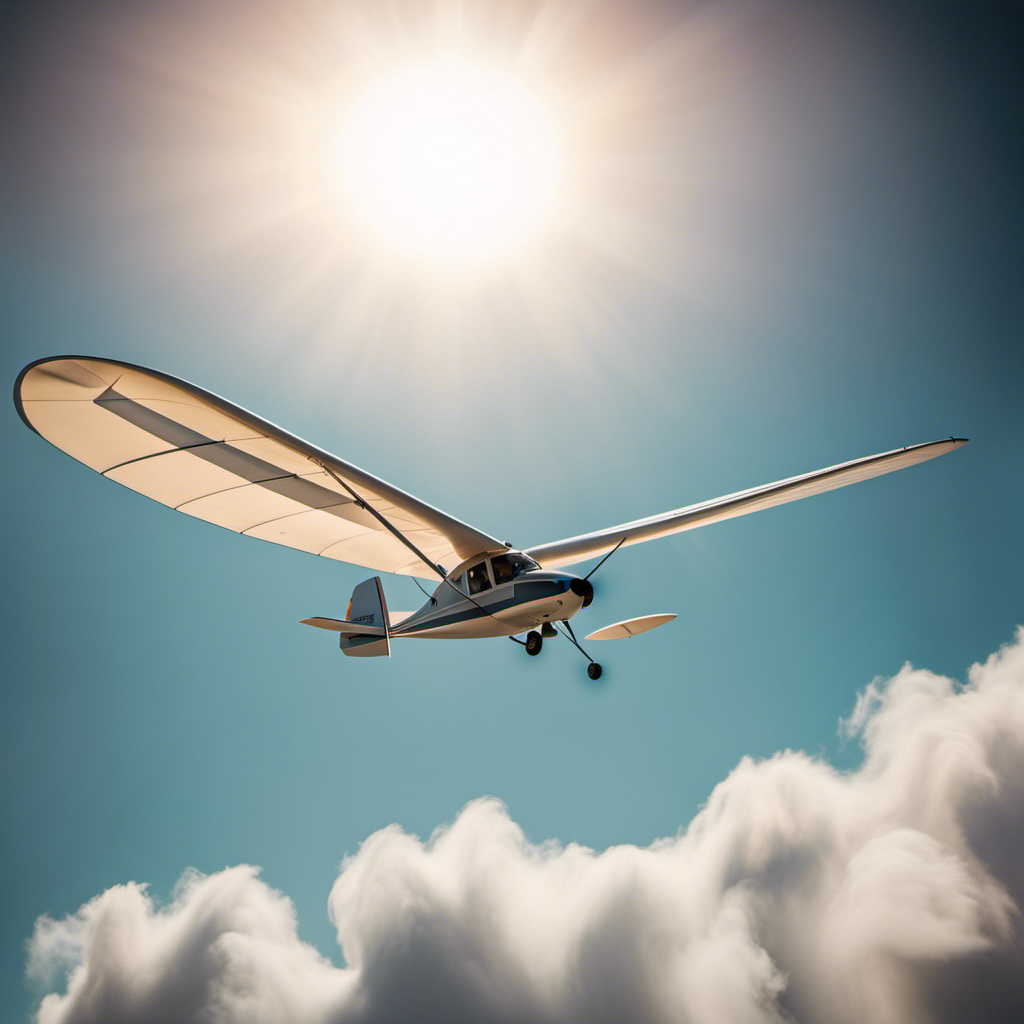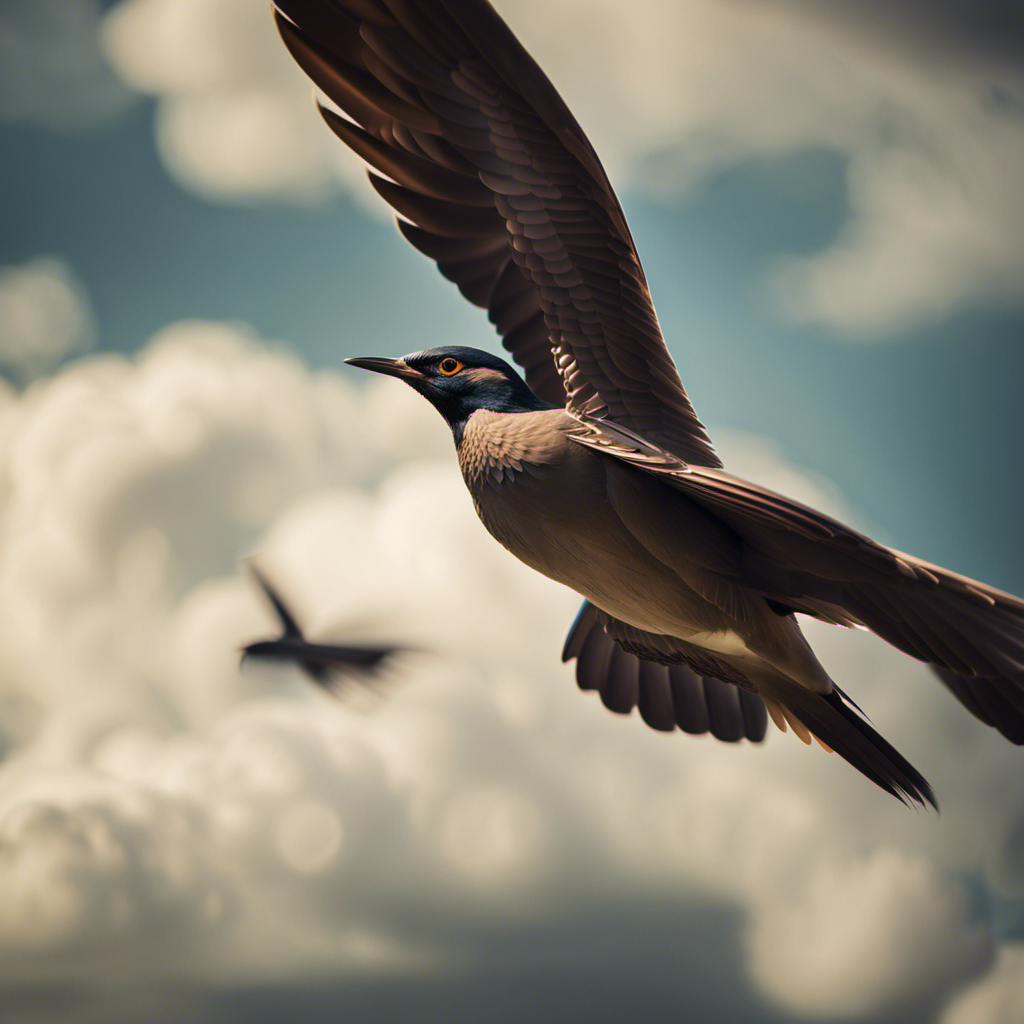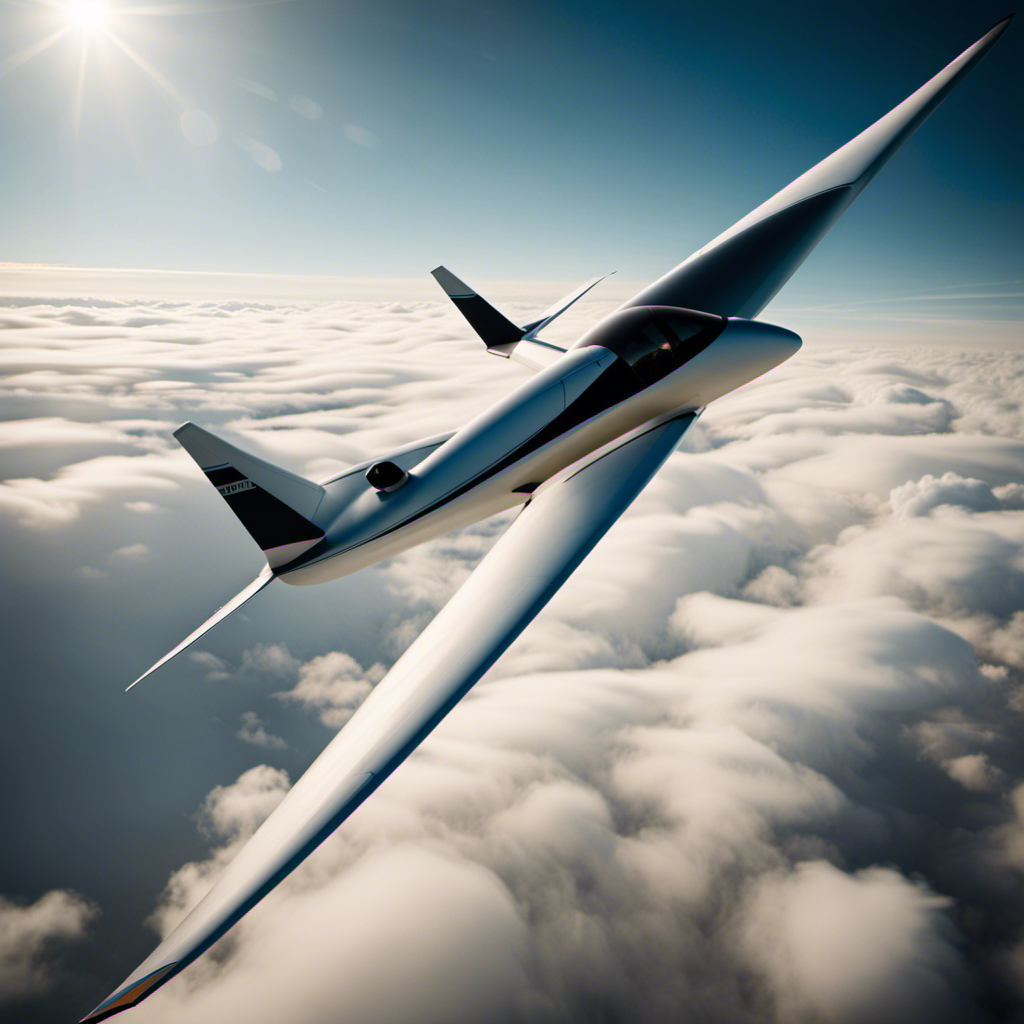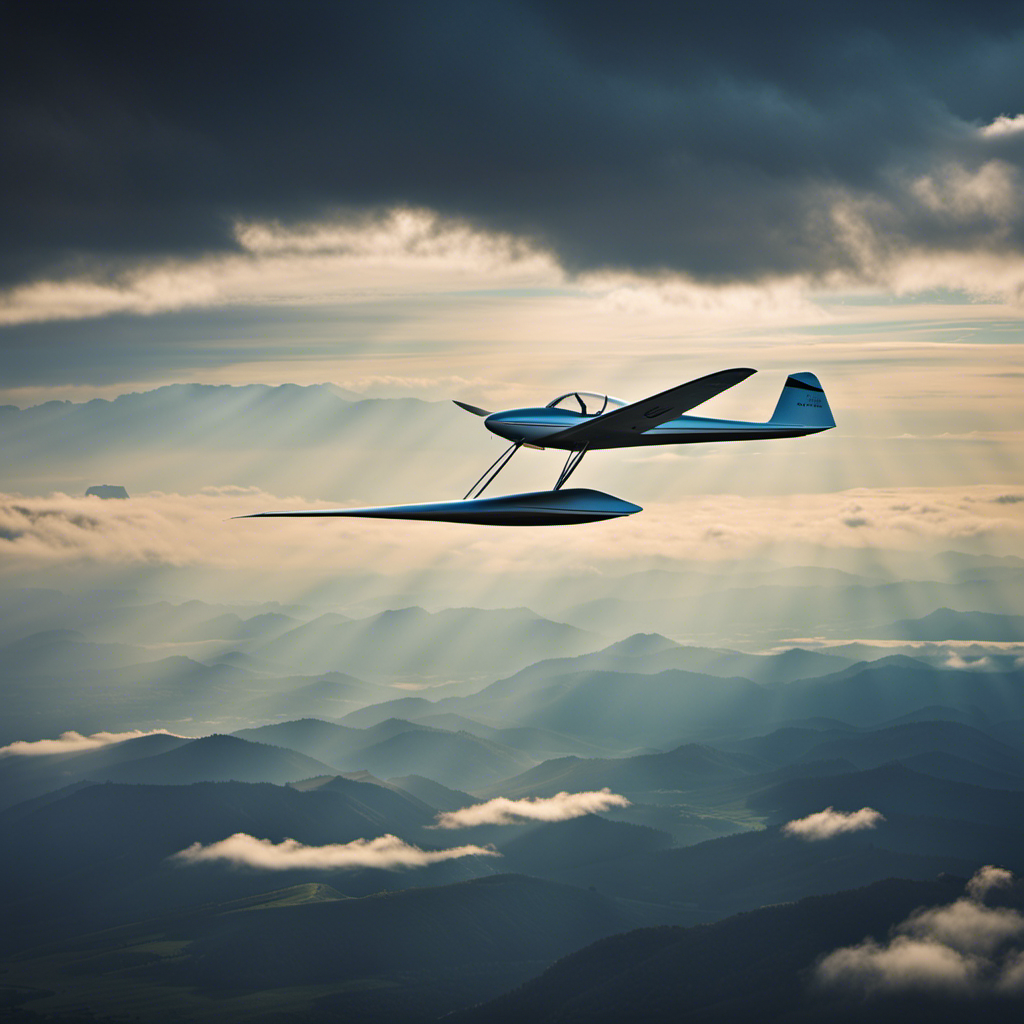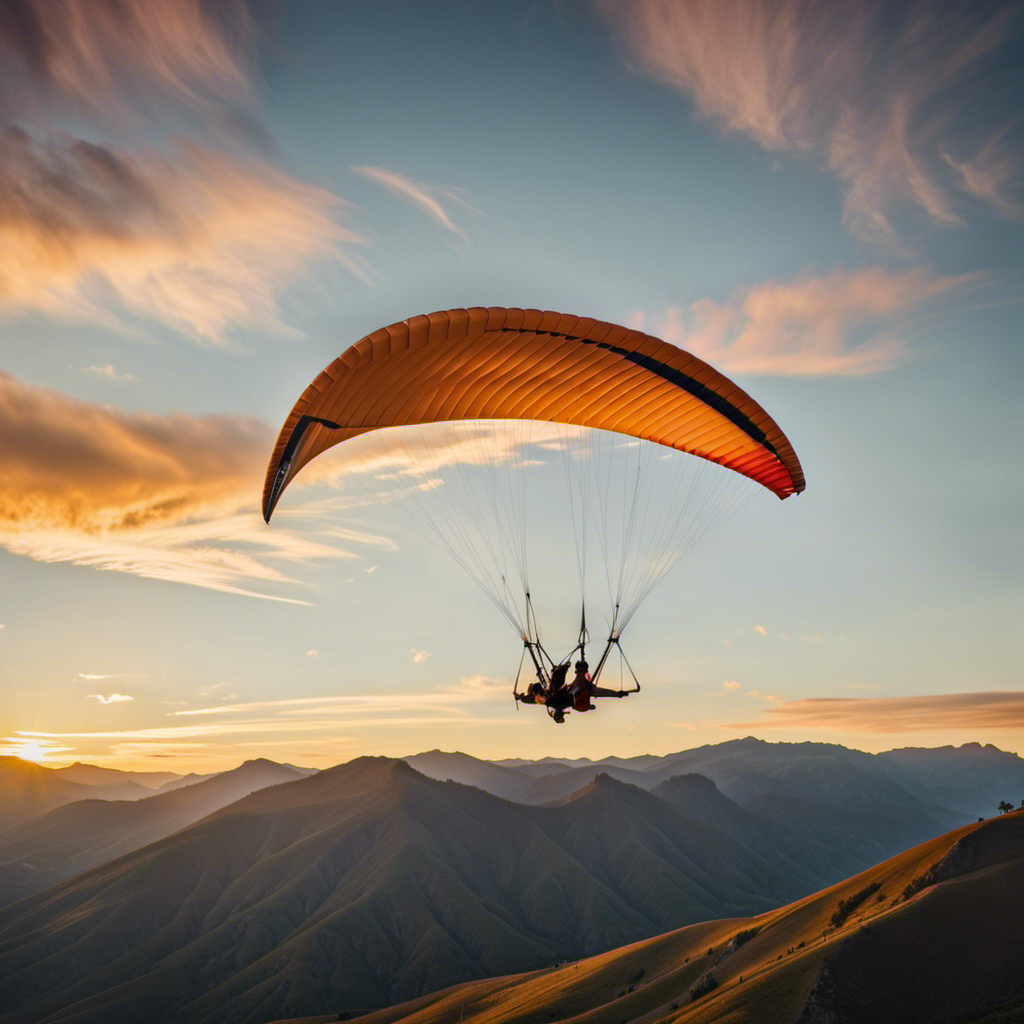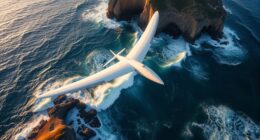As a glider pilot, the pure exhilaration of soaring through the sky never fails to amaze me.
But have you ever wondered, do gliders need wind to fly?
In this article, we will explore the fascinating mechanics behind glider flight and discover the intricate relationship between wind, lift, and gravity.
From understanding air pressure and aerodynamics to the importance of weight and balance, we will delve into the technical aspects of glider performance.
So buckle up and prepare to soar into the world of glider aviation.
Key Takeaways
- Wind affects the stability and maneuverability of gliders.
- Techniques such as searching for thermals and ridge soaring can be used to maintain lift in calm conditions.
- Safety considerations, including thorough glider inspections, familiarity with emergency procedures, and the presence of safety equipment, are crucial for glider pilots.
- Maintaining situational awareness and reacting quickly to emergencies can help mitigate risks during glider flights.
How Gliders Generate Lift
To generate lift, gliders rely on the principles of aerodynamics and the interaction between the glider wings and the air. The shape of the wings is crucial in this process. The wings are designed to be curved on top and flatter on the bottom, creating a pressure difference. As the glider moves forward, the air flows over the curved top surface faster than it flows under the flatter bottom surface. This difference in air speed creates lower pressure on top and higher pressure on the bottom, resulting in lift. The wings are also angled slightly upwards to enhance lift. Understanding the mechanics of glider lift is essential in comprehending the role of gravity in glider flight.
The Role of Gravity in Glider Flight
You’ll be surprised to learn that gravity plays a crucial role in how gliders stay aloft. While it may seem counterintuitive, gravity actually helps gliders achieve lift and maintain their altitude in the air.
As a glider is launched into the sky, it starts descending due to the force of gravity. However, as it descends, the glider’s wings generate lift by creating a pressure difference between the upper and lower surfaces of the wing. This lift force counteracts the pull of gravity and allows the glider to stay airborne.
Understanding the role of gravity in glider flight is essential for comprehending the next aspect of flight: air pressure and its effect on gliders. By comprehending how air pressure influences glider performance, we can gain a deeper understanding of the intricate dynamics behind glider flight.
Understanding Air Pressure and its Effect on Gliders
Understanding air pressure and how it affects gliders is crucial for comprehending the next aspect of flight. The dynamics of air pressure play a significant role in determining the performance of a glider. Here are three key points to consider:
-
Lift generation: Air pressure dynamics, specifically Bernoulli’s principle, explain how gliders generate lift. As air flows over the wings, it accelerates, creating lower pressure on the upper surface and higher pressure on the lower surface. This pressure difference generates lift, allowing the glider to stay airborne.
-
Sink rate: Wind speed greatly influences a glider’s sink rate. Higher wind speeds increase the pressure on the wing’s upper surface, reducing lift and causing the glider to descend faster. Conversely, lower wind speeds allow for more lift generation, resulting in a slower sink rate.
-
Glide ratio: The relationship between air pressure and wind speed also impacts a glider’s glide ratio. Higher wind speeds can increase the glider’s groundspeed, resulting in a longer glide distance. However, excessive wind can also cause turbulence, affecting the stability of the glider.
Understanding these air pressure dynamics and the impact of wind speed is crucial in designing gliders for optimal performance and efficiency. In the next section, we will delve into glider design and aerodynamics, further exploring the intricacies of flight without relying on wind.
Glider Design and Aerodynamics
When designing a glider, it’s important to consider the principles of aerodynamics and how they impact the overall performance. Glider stability and wing design play crucial roles in achieving optimal flight characteristics. To ensure stability, gliders are designed with wings that generate lift and provide control.
The shape and size of the wings determine the amount of lift generated, while the position of the wings affects the glider’s balance. The wing design also affects the glider’s maneuverability and performance in different flight conditions. By carefully considering these factors, glider designers can create aircraft that are stable, efficient, and capable of soaring through the air with grace.
Moving forward, weight and balance are key considerations in maximizing glider performance.
The Importance of Weight and Balance in Glider Performance
The weight and balance of a glider are crucial factors that directly impact its performance and stability. Achieving the correct weight distribution is essential for optimal flight characteristics. Here are four reasons why weight and balance are important in glider performance:
-
Stability: Proper weight distribution ensures that the glider remains stable during flight, reducing the risk of uncontrollable movements or tipping.
-
Maneuverability: Correct weight distribution allows for precise control and maneuverability, enabling the pilot to make precise turns and adjustments during flight.
-
Performance: An accurately balanced glider can achieve maximum efficiency, resulting in longer flight times and better overall performance.
-
Safety: Maintaining the correct weight and balance ensures the glider operates within safe limits, reducing the risk of accidents or structural failures.
Using Thermals and Updrafts for Extended Flight
After understanding the importance of weight and balance in glider performance, it is essential to explore the role of thermals and updrafts in maximizing flight duration.
Thermals and updrafts are both natural phenomena that can provide gliders with the lift needed to stay aloft without the need for an external power source.
Thermals are columns of warm air that rise from the ground due to the heating of the Earth’s surface. Glider pilots can use thermals to gain altitude by circling within the rising column of air.
On the other hand, updrafts are pockets of rising air caused by the terrain or weather conditions. These updrafts can also be exploited by glider pilots to extend their flight time.
By effectively utilizing thermals and updrafts, glider pilots can stay airborne for extended periods, increasing their flight duration and distance. However, the performance of a glider is also greatly influenced by the wind.
Understanding the effect of wind on glider performance is crucial to mastering the art of soaring.
The Effect of Wind on Glider Performance
Utilizing thermals and updrafts can significantly enhance a glider’s performance. Wind plays a crucial role in determining the success of each flight. The effect of wind on glider stability is profound. When flying in a headwind, the glider experiences an increase in lift, allowing it to stay aloft for longer periods. On the other hand, a tailwind can cause a decrease in lift, making it more challenging to maintain altitude.
Wind also has a significant impact on glider maneuverability. Crosswinds can cause the glider to drift off course, requiring constant adjustments to maintain direction. It is essential for glider pilots to understand the effect of wind on their aircraft’s stability and maneuverability to ensure safe and efficient flights.
Transitioning to the techniques for flying in calm conditions, pilots must adapt their strategies to counter the absence of wind.
Techniques for Flying in Calm Conditions
When there’s no wind, glider pilots must adjust their techniques to navigate calm conditions. Flying techniques in these situations are crucial for staying airborne.
To maintain lift without the assistance of wind, glider pilots can employ various strategies. First, they can search for areas of rising air, known as thermals. Thermals are created by the heating of the ground, causing air to rise. By flying in circles within a thermal, glider pilots can gain altitude and prolong their flight.
Another technique is ridge soaring, where pilots fly close to a ridge or mountain slope. As the wind blows against the ridge, it creates an upward force that gliders can use to stay aloft.
These techniques allow glider pilots to continue flying even in calm conditions, ensuring an enjoyable and extended flight time.
As with any aviation activity, safety considerations for glider pilots are of utmost importance.
Safety Considerations for Glider Pilots
Remember to always prioritize safety when flying in calm conditions as a glider pilot. It is crucial to take necessary safety precautions to ensure a smooth and secure flight.
Before taking off, thoroughly inspect the glider for any signs of damage or malfunction. Familiarize yourself with the emergency procedures and practice them regularly. Ensure that you have the appropriate safety equipment on board, including a parachute and a reliable communication system.
Stay vigilant and maintain situational awareness throughout the flight. Be prepared to take immediate action in case of any unforeseen circumstances.
By following these safety precautions and being well-prepared for emergencies, you can mitigate risks and enjoy a safe flight.
Speaking of advancements in glider technology…
Advancements in Glider Technology
Advancements in glider technology have greatly improved the efficiency and performance of these aircraft. With the help of cutting-edge technology, gliders have become more capable and versatile than ever before.
One of the most significant advancements is the use of composite materials in glider construction. These materials, such as carbon fiber-reinforced polymers, offer high strength-to-weight ratios, allowing for lighter and more durable gliders.
Additionally, advancements in aerodynamics have led to better wing designs, reducing drag and increasing lift. This, combined with improved control systems and instrumentation, has enhanced the overall handling and maneuverability of gliders.
Furthermore, advancements in cockpit technology, including the use of advanced avionics and navigation systems, have made glider flying safer and more efficient.
These technological advancements continue to push the boundaries of what gliders are capable of, making them an exciting and viable option for aviation enthusiasts around the world.
Frequently Asked Questions
What are the safety considerations for glider pilots?
As a glider pilot, safety is paramount. It is crucial to ensure proper glider maintenance to minimize any potential risks. Additionally, being well-versed in emergency procedures is essential for handling unexpected situations and ensuring a safe flight.
How do gliders generate lift?
To generate lift, gliders utilize a combination of glider wing design and Bernoulli’s principle. The shape of the wings creates a pressure differential, with low pressure on top and high pressure underneath, allowing the glider to stay aloft.
What is the role of gravity in glider flight?
Gravity plays a crucial role in glider flight. It provides the downward force that counteracts the lift generated by the glider’s wings. The effects of gravity on glider performance dictate the glider’s descent rate and ability to maintain altitude without a power source.
How does air pressure affect gliders?
Air pressure, influenced by air density and Bernoulli’s principle, plays a crucial role in glider flight. It creates lift by causing a pressure difference between the top and bottom surfaces of the wings, allowing gliders to soar through the air.
What advancements have been made in glider technology?
Advancements in glider technology have revolutionized the way gliders fly. New materials, such as carbon fiber, have made gliders lighter and more aerodynamic. Modern gliders also have improved control systems and instruments for enhanced performance and safety.
Conclusion
In conclusion, gliders do not need wind to fly, but it greatly enhances their performance. The combination of glider design, aerodynamics, and the skill of the pilot allows these aircraft to generate lift and glide through the air.
While wind is not a requirement, it plays a crucial role in helping gliders soar higher and stay aloft for longer periods. With advancements in technology, gliders continue to push the boundaries of flight, making them a thrilling and innovative choice for aviation enthusiasts.
So, strap in and experience the exhilaration of gliding through the skies like a bird on the wind!
